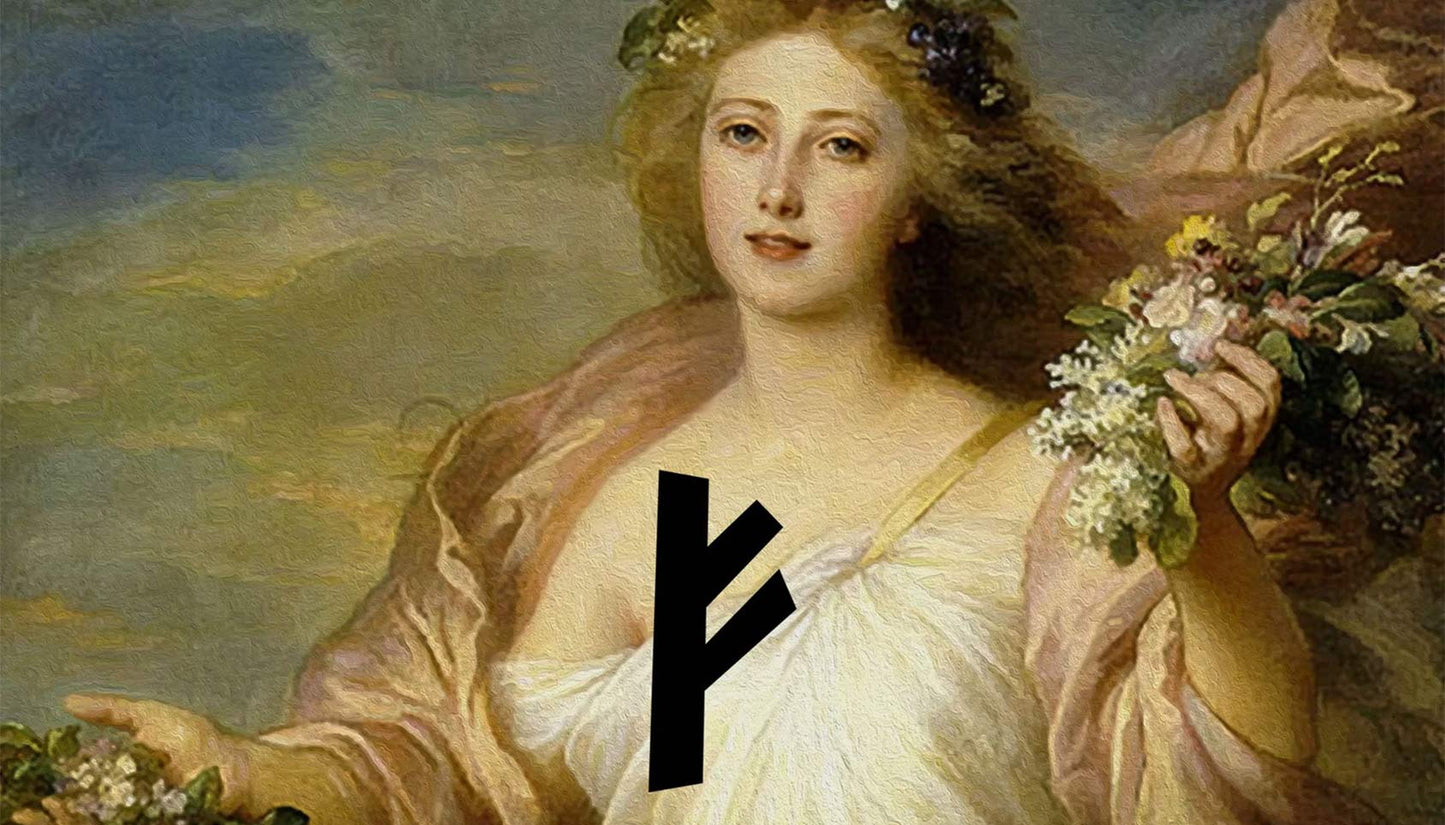We source our chicken from one farm in Leicestershire. The farm is Pasture for Life certified and rears truly free range, outdoor birds.

Back in about AD 595 Pope Gregory sent a group of missionary monks on a journey led by a Benedictine called Augustine who was the prior of St Andrew's Monastery in Rome. Augustine was instructed to take 40 monks to England with instructions to convert the pagan inhabitants to Christianity.
Image shows Pope Gregory I

The task was presented as this, the missionaries were to superimpose the Christian ceremonies and philosophies onto the existing heathen festivals and beliefs easing the transition.
In that time the pagan Britons believed that everything in nature had its own soul and guardian deity. If a tree was to be felled, a river dammed, a rock moved, a plant or animal disturbed then permission had to be asked, this also applied to weather patterns and events, it was all in the hands of the gods.
The ancients who practised this did not refer to themselves as pagan, this term was largely understood to simply define anything 'non-christian' at the time, in fact they undoubtedly didn't think of themselves as religious, it is simply how things were. There was also a belief in a variety of other supernatural entities which inhabited the landscape, including elves, nicor, and dragons. Cultic practice largely revolved around demonstrations of devotion, including sacrifice of inanimate objects and animals, to these deities, particularly at certain religious festivals during the year. There is some evidence for the existence of timber temples, although other cultic spaces might have been open-air, and would have included celtic trees and megaliths.
Political map of Britain c. 650 (the names are in modern English)

The task facing the missionaries on Pope Gregory's task was seemingly simple: gradually replace the pagan festivities and notable dates with celebrations to honour Christian saints and martyrs, the church had a good stock to choose from, it was just a case of finding a suitable match that would ease the transition.
This transition was not achieved overnight, it took place over several centuries as the pagan traditions gradually became associated with the 40+ pagan dates of note per year, being given saints names but unmoved in the calendar.
There was one date in the pagan calendar that was certainly sacred, it was marked as the first Sunday after the vernal equinox, the day on which the hours of sunlight and darkness were balanced as we entered spring, this was a time of rebirth, of renewal, of growth and the beginnings of new life.
At this time the pre-chistrianised Britons celebrated this time by worshipping a goddess of German origin called Eostre. Her name was Ēastre in Northumbrian dialect and Ēastro in Mercian and West Saxon originating from the German and the Old High-Germanic month bearing her name Ôstarmânoth.
Eostre was said to have the divinity of the radiant dawn, of the new light that brings joy and blessing, she represented fertility, spring, flowers and rebirth.
Unfortunately for us as contemporary historians the Britons at this time saw no reason to write down their beliefs, it's just how things were so much of the nuance of the meaning of Eostre is lost but we have conjecture and links, her name first appeared in literature in a document by Venerable Bede (673-735 AD)
Cropped portrait from The Last Chapter by J. Doyle Penrose (c. 1902), showing Bede finishing his translation of the Gospel of John on his deathbed

From Wikipedia:
The Venerable Bede, and Bede the Venerable (Latin: Beda Venerabilis), was an English monk at the monastery of St Peter and its companion monastery of St Paul in the Kingdom of Northumbria of the Angles (contemporarily Monkwearmouth–Jarrow Abbey in Tyne and Wear, England).
At the age of seven, Bede was sent as a 'puer oblatus' to the monastery of Monkwearmouth by his family to be educated by Benedict Biscop and later by Ceolfrith. Bede does not say whether it was already intended at that point that he would be a monk
When Bede was about 17 years old, Adomnán, the abbot of Iona Abbey, visited Monkwearmouth and Jarrow. Bede would probably have met the abbot during this visit, and it may be that Adomnán sparked Bede's interest in the Easter dating controversy.
The controversy over the correct date for Easter began in Early Christianity as early as the 2nd century AD. Discussion and disagreement over the best method of computing the date of Easter Sunday has been ongoing ever since and remains unresolved. Different Christian denominations continue to celebrate Easter on different dates, with Eastern and Western Christian churches being a notable example.
It was this interest that caused the young Bede to discover the goddess Eostre and note how her reign had been replaced with the new Christian doctrine surrounding the resurrection of Christ.
Easter, according to Scripture, falls around the time of Passover (Matthew 26:2), and Passover tends to happen very close to when Easter occurs.
The church likely saw both holidays happening at the same time, and decided, like with Lupercalia and Samhain, to try and blend the two in a way to eliminate tensions between those of other religions and form a bridge between the two to spark a curiosity in the Christian holiday.
Eostre also has connections with symbols such as new life, which can easily be tied into the Easter story of Christ’s resurrection granting us rebirth and new life in him (2 Corinthians 5:17).
The celebration of Eostre was so sacred to the ancient Britons that the monks sent to convert them decided wisely to not change the name of this Springtime celebration but to overlay the symbolism with something fitting from the Christian tradition, the resurrection of Christ was perfect and the name was almost unchanged to what we now know as Easter.
So where did the bunnies and eggs come into it?
Some symbolism we now associate with Easter such as the cross and tomb have obvious Christian roots but much of the symbolism we now associate with the tradition is pagan.
Eostre typically was associated with the animal symbol of a bunny or rabbit, animals known for breeding and producing lots of offspring and for being especially 'active' at this time of year.
Eggs were also a symbol of fertility; as seen on many depictions of the goddess Ishtar, egg symbols for rebirth date far back into the Old Testament time frame. The egg is a natural fit as a symbol for this time as domesticated chickens would have stopped laying for the cold winter and would start again around this time. The dying of eggs is also not as new as we might think but is undoubtedly a Christian addition to the tradition, some believe it dates back to a a Mesopotamian tradition others saying it comes Eastern European legends coming from Mary who was present at her son’s crucifixion on Good Friday According to these legends, she brought eggs with her. In one version, blood from Jesus’ wounds drops on the eggs, colouring them red.
Another version of the legend tells of Mary weeping, begging the soldiers at the cross to be less cruel to her son. She gives these soldiers eggs and, as her tears fall on them, they are spotted with brilliant colour.
Even the Easter basket comes from pagan roots, the woven basket was used to carry seedling offerings in rituals to the goddess Eostre, this was hugely important as it was believed that if the seedlings pleased her, she would ensure that the harvest was successful.
This Easter if you're painting or hiding eggs, putting them in a basket or perhaps sending cards to loved ones with bunnies on, take a moment of meditation to connect to the Goddess Eostre, the true spirit of Easter.




